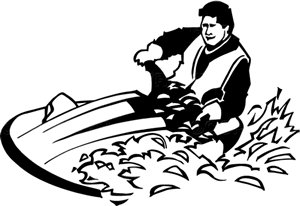| Use | Prep | Post-Ride | Storing |
What is a PWC?
Laws & Rules
Places to Ride
Photo Gallery
After the driver has boarded the PWC one passenger should load at a time. It is usually easiest to board the PWC if you are docked but it can be achieved from in the water in the same manner described before. Before starting the engine, make sure that each passenger is securely holding the person in front of them and both feet are firmly placed in the foot wells. Start the engine and check all around for possible dangers, when it's safe pull out. Practice turning, maneuvering, and gaining speed before you start joy riding so you can get used to the extra weight.
Basic Speeds
When operating a PWC there are 4 basic speeds; trolling, sub planning speed, planning speed, and above planning speed. Trolling is the lowest maneuvering speed; generally less than 15 mph and you are applying little or no gas. The PWC will be flat in the water and there is no wake. Trolling is best for making slow turns, riding in reverse, or operating the PWC in crowded areas. Sub planning speed is a medium speed where you are traveling 15-30 mph and the bow is slightly raised out of the water. You are still traveling through the water and there is a wake. The wake is more like a spray at this speed and will fly up and out.
Planning speed and above planning speed are general riding speeds above 30 mph. At these speeds the watercraft is more level and skimming across the top of the water. Your wake will be wide and low.
Crossing Wakes and Swells
Because the water is not always smooth and flat when operating a PWC you need to learn how to cross wakes and swells without danger of injury. Swells and wakes are caused by other boaters and wind and the best way to cross these is with the least amount of jolt to you, your passengers, and the watercraft. Small swells are easier to cross than large swells or a group of wakes.
When crossing a wake or swell grip the handle bars firmly, root your feet to the floor and lessen your speed. Choose an angle at which to cross the swell, called quartering. You will find it much easier to cross the swell or wake using a 45 degree angle, but you can always adjust as you go. At lower degrees you will find more resistance in crossing wakes and swells. When quartering the watercraft may pull away from the wake but you must steer over it. When raising over the top of the swell lift your buttocks slightly off the seat and let your legs absorb the shock instead of your back and neck.
As always in riding, keep your head and shoulders high above the front of the handle bars or you may find yourself with a bloody nose or black eye. Be especially careful when operating your watercraft in rough water and do not use it in bad weather.
What to do if You Capsize
The first thing you have to remember about being capsized is that the engine compartment and carburetor may become filled with water if left upside down too long causing engine malfunction. Do not leave your jet ski capsized longer than it takes to upright it again. If the engine shut off clip is not yet detached carefully swim under the jet ski and pull it out. Once the engine is shut off, swim to the back of the watercraft and lift up the bottom left corner while pushing down the right side. The ski should flip over with minimal difficulty. Get back on the PWC and start the engine. Operate the watercraft above planning speed for at least two minutes to expel any remaining water in the engine compartment. If your ski does not start or stay started, wait a couple of minutes and try again.
